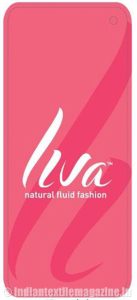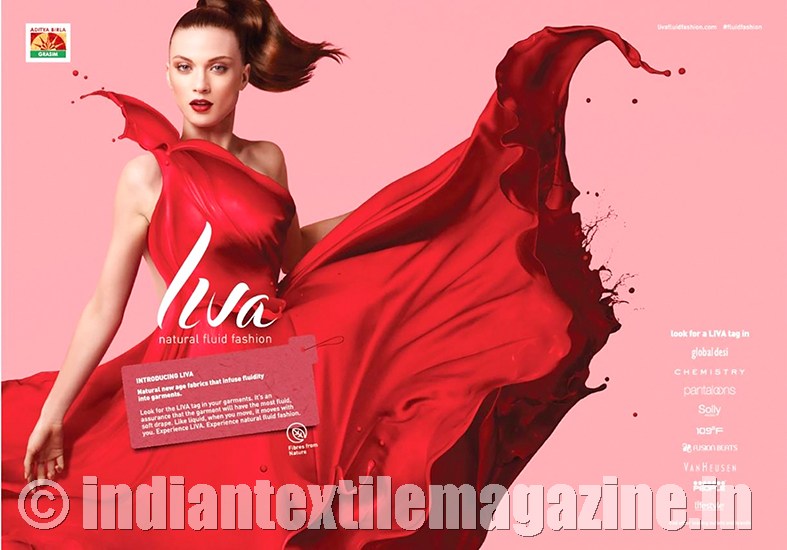By Abhimanyu Mathur, Executive Vice President, Lowe Lintas
The first article on this subject showcased a case study called Gore-Tex, which is a very famous Ingredient Branding case.
As the name suggests, Ingredient Branding is, as the name suggests, branding of a component of a finished product, i.e., a type of fabric like Lycra. A finished product brand like Levis then uses the brand Lycra in its advertising, thereby benefiting from it.
Lycra charges a premium over any other similar technology because it has made the effort to create PULL for its brand. And, in turn, Levis gets to charge a premium too for jeans that have Lycra in it over jeans that don’t.
In this article, we explore a famous example from India. A company that branded and owned a fabric.
Liva
Liva is an ingredient brand for viscose or a viscose blend. This is a campaign created by Lowe Lintas. A lot of other fabrics that were being produced were growing. But Rayon or Viscose was not. The demand was flat. No one was asking for that material.
ABG decided to take that step and build a brand for viscose. The challenge was to make viscose more relevant. I had covered this in brief in my earlier article “Be the first in your category to build a brand’, in the June issue. But let’s look at it in some more detail.
The strategy was to talk to the end-user within the Ear-shot of Trade. We went back to the fundamentals. What is the material known for? There were multiple options. The first was that it is a ‘Soft & Light’ fabric, hence ‘Comfortable. The second is that it has a ‘Lustrous Look’ or ‘Great Drape’. And the third, it is ‘Breathable’ as it has ‘High Moisture Absorbency’.
On looking at these three spaces, we felt that the first and third were too close to cotton. After all, if we are building a brand for a fabric, it must be unique to that fabric. It must be something we can credibly own. And also something that the consumer wants. And if cotton is giving them that benefit, why will they seek it in another material.
That is why we decided to go with ‘Great Drape’.
We explored ‘Great Drape’ through multiple concepts that ranged from Grace, Sensuality, Feminineness, Chicness and Fluidity.
While the first four are more personal spaces, something that benefit the person, it is the last, Fluidity, that defines not just the benefit but also the functionality of the fabric. Pin-pointing the functionality is important as a first step in launching a brand of fabric.
But it is not enough. The communication cannot stop at calling out the Fluidity of the fabric. That is not going to get people to buy. Not for this category at least, because people don’t buy fabrics, they buy garments.
And garments have to be fashionable. They have to be stylish. So, we spoke to different designers who endorsed that ‘Fluidity’ was the way to go. That it allowed for us to make a fashion statement.
The final articulated tagline we arrived at was ‘Natural Fluid Fashion’. We created the visual identity for the brand, in the form of a tag that would go on all Garments that used the Liva fabric.
We faced two big challenges in our communication development. The first was that whatever we did we had to be fashionable. The second was how we would show ‘Fluidity’ in the print medium. I am sure you will agree that both the challenges are well-addressed.
Do take notice of the brands mentioned on the side. These brands were the ones creating and selling garments made from Liva. And would therefore carry the ‘Liva Tag’. And garments with the Liva tag command a price premium. That works for Liva and the garment manufacturers. And frankly the consumers don’t mind because they are getting what they want.
Currently, Liva’s success is reflected through its 30+ brand tie-ups and availability in 3,000+ outlets and 190+ cities.
Three things to learn from this case:
- The Liva case shows how a stagnant fabric can be given a new lease of life by owning it and building a brand.
- When branding a fabric, search for what is unique about that fabric that no other fabric can lay claim to credibly.
- Being fashionable and at the forefront is critical to this category. This invited fashion designers and fashion-oriented brands to use this fabric for their collections.
The author of this article works at Lowe Lintas. A seasoned professional with over 2 decades of experience, working on some of the agency’s biggest clients. Lowe Lintas manages the most brands from India’s top 10 most trusted brands. Find him at abhimanyu.mathur@lowelintas.in



